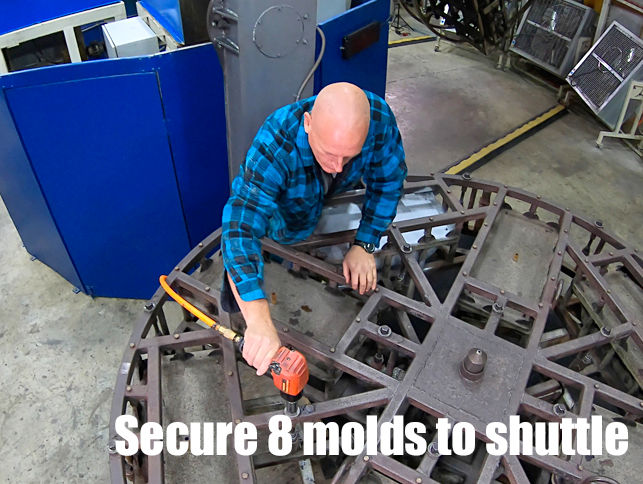
ROTATIONAL
MOLDING
FOR LARGE HOLLOW OR FOAM FILLED PARTS
DESIGNING FOR MANUFACTURING
Designing for Manufacturing (DFM) in plastic injection molding optimizes efficiency by minimizing material waste and simplifying part geometries which can lower tooling costs and ensure product quality.
Collaboration between design engineers and manufacturing experts addresses material selection and regulatory compliance, guaranteeing successful outcomes in plastic injection molding.
MOLD
BUILDING
Our skilled toolmakers use computer-aided design (CAD) to develop the mold's intricate details, including parting lines, gating, and cooling channels.
The quality and precision of the mold directly impact the final product's consistency, efficiency, and overall manufacturing success.
See below to learn more about the mold building process...
MATERIAL SELECTION
We work closely with you to select your part's material based on the specific requirements of the project.
Considerations include: Mechanical Properties, Thermal Properties, Chemical resistance, Functionality, Appearance, Regulatory Compliance & more...
Prototyping and testing are then conducted to validate material choices and ensure that the final product meets performance expectations.
INSERT + OVERMOLDING
Insert molding and overmolding are specialized plastic injection molding techniques that involve molding additional components or materials onto or around an existing substrate.
Common applications of insert molding include adding metal inserts for increased strength or incorporating electronic components, such as connectors or sensors, directly into a plastic part.

We're BIG on ROTATIONAL MOLDING
UP TO 16'

ROTATIONAL MOLDING, also known as rotomolding or rotocasting, can create hollow, one-piece plastic parts like tanks, kayaks, coolers, and floats filled with foam.
Plastic or nylon material is turned into dust and put in a mold, which is then rotated inside a massive oven, allowing the melted plastic to coat the inside of the mold evenly.
-
Large parts
-
Hollow parts
-
Low to medium production volumes
-
Up to 16 feet
SCROLL through the shop
THE ADVANTAGES OF ROTATIONAL MOLDING
NO SIZE LIMITATIONS
Flexibility in the size of parts you can create from small to large parts; from 5 gallons to 22,000 gallons
QUALITY FINISH
A naturally smooth finish, eliminating or reducing post-production part finishing
HOLLOW PART CREATION
A single, seamless construction making it idea for the creation of hollow parts
Most effective for short runs with cheaper up front tooling and molding
costs
EFFECTIVE FOR SHORT RUNS





We heat a hollow mold, fill it with plastic or nylon powder and rotate it around two perpendicular axes (on spider arms) inside a large oven that heats up to 500° F. As the plastic material melts and coats the interior of the mold evenly, it solidifies, resulting in a seamless, one-piece product. This is advantageous for applications where a continuous, uniform structure without seams is crucial, such as tanks, containers, and certain automotive parts.
-
Complex shapes: Rotomolding excels at producing complex shapes with hollow interiors, undercuts, and internal ribs.
-
Uniform wall thickness: The rotation ensures an even distribution of plastic, resulting in consistent wall thickness throughout the part, enhancing strength and eliminating weak spots.
-
Lightweight parts: Despite their strength, rotomolded parts can be surprisingly lightweight, offering advantages in transportation and weight-sensitive applications.
-
Material efficiency: Rotomolding minimizes material waste due to its casting nature, reducing production costs and environmental impact.
-
Low tooling costs: The molds used in rotomolding are typically simpler and less expensive than those required for other processes like injection molding, making it suitable for short production runs and prototyping.
-
High strength: Rotomolded parts are strong and resistant to impact, chemicals, and UV radiation, making them suitable for demanding applications.
-
Double-wall construction: This technique allows for excellent insulation properties, ideal for products requiring temperature control like coolers and water tanks.
-
Variety of materials: Rotomolding accommodates various plastics with specific properties, allowing for customization based on application requirements.
-
Low cycle times: Compared to other methods, rotomolding often boasts faster cycle times, leading to quicker production turnarounds.
-
Color integration: Colors can be directly mixed into the plastic powder, eliminating the need for painting and ensuring color consistency throughout the part.










